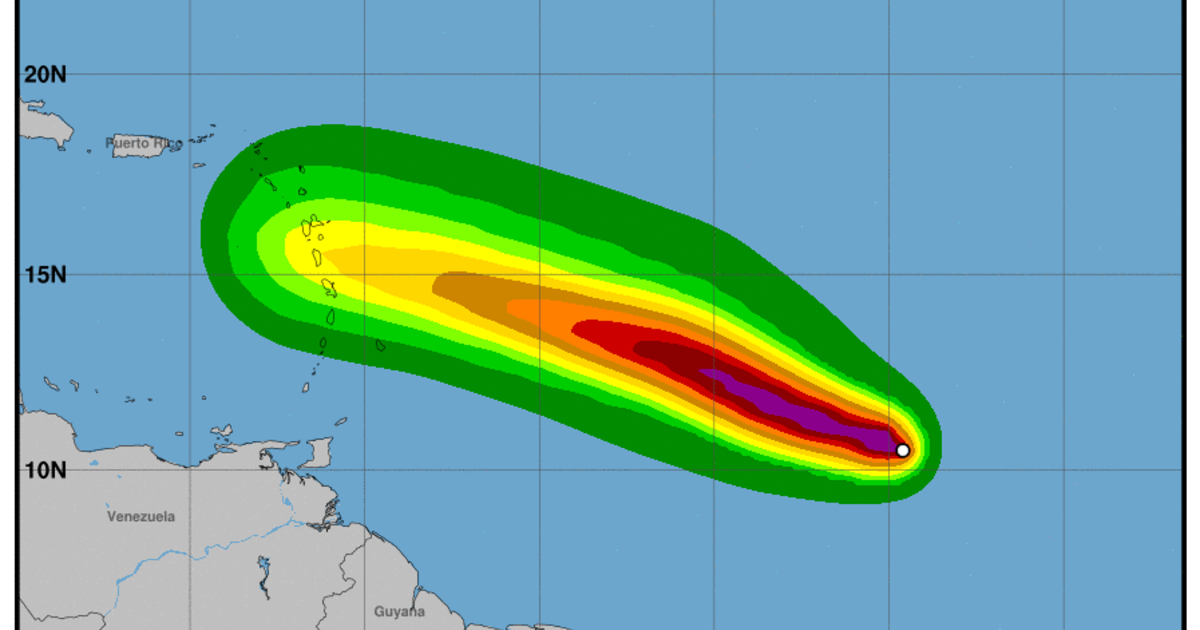Storm’s Path and History

Beryl hurricane path – Hurricane Beryl originated as a tropical wave that emerged off the coast of Africa on July 5, 2018. It gradually intensified as it moved westward across the Atlantic Ocean, reaching tropical storm strength on July 8 and hurricane status on July 10.
As Hurricane Beryl’s path continues to be monitored, it’s worth noting that Governor DeSantis recently vetoed a bill that would have provided funding for hurricane preparedness. While the reasons behind the veto are still being debated, it’s clear that the state’s ability to respond to Beryl and other potential storms may be impacted.
Nevertheless, residents are urged to stay informed about the hurricane’s progress and take necessary precautions.
Beryl maintained hurricane intensity for several days, passing north of the Lesser Antilles and Puerto Rico. It made landfall in the Dominican Republic on July 13, bringing heavy rain and wind to the island. The storm continued northwestward, making a second landfall in the Bahamas on July 14.
After crossing the Bahamas, Beryl weakened to a tropical storm as it approached the coast of Florida. It made landfall near Jacksonville on July 15, bringing heavy rain and flooding to the area. Beryl continued inland, weakening to a tropical depression on July 16 and dissipating over Georgia on July 17.
As Hurricane Beryl swirls through the Atlantic, its path remains uncertain. Meanwhile, Governor DeSantis has vetoed several bills , including one that would have provided funding for hurricane preparedness. As Beryl approaches the coast, residents are urged to stay informed and take precautions, as its impact could be significant.
Timeline of Beryl’s Development
- July 5, 2018: Tropical wave emerges off the coast of Africa.
- July 8, 2018: Tropical wave intensifies to Tropical Storm Beryl.
- July 10, 2018: Tropical Storm Beryl strengthens to Hurricane Beryl.
- July 13, 2018: Hurricane Beryl makes landfall in the Dominican Republic.
- July 14, 2018: Hurricane Beryl makes landfall in the Bahamas.
- July 15, 2018: Hurricane Beryl weakens to Tropical Storm Beryl and makes landfall near Jacksonville, Florida.
- July 16, 2018: Tropical Storm Beryl weakens to a tropical depression.
- July 17, 2018: Tropical depression Beryl dissipates over Georgia.
Impact and Aftermath

Hurricane Beryl left a trail of destruction in its wake, causing significant damage to infrastructure, property, and the environment. The storm’s powerful winds and heavy rainfall led to widespread power outages, downed trees, and flooded streets, disrupting daily life and causing widespread disruption.
In the immediate aftermath of the storm, emergency response teams were deployed to affected areas to provide assistance and initiate recovery efforts. Power crews worked tirelessly to restore electricity, while road crews cleared debris and repaired damaged infrastructure. Community organizations and volunteers also played a vital role in providing food, shelter, and other essential services to those impacted by the storm.
Environmental Impact
Hurricane Beryl also had a significant impact on the environment. The storm’s strong winds and heavy rainfall caused extensive erosion along coastal areas, damaging beaches and dunes. The storm surge also flooded wetlands and estuaries, disrupting delicate ecosystems and harming wildlife. In addition, the storm’s winds knocked down trees and uprooted vegetation, altering the landscape and potentially impacting local wildlife populations.
Recovery and Rebuilding
The recovery and rebuilding process after Hurricane Beryl was a long and challenging one. Many communities were faced with the task of rebuilding homes, businesses, and infrastructure that had been damaged or destroyed by the storm. The government provided financial assistance to affected areas, and community organizations and volunteers worked together to support the recovery efforts.
The recovery process also involved addressing the environmental impact of the storm. Coastal areas were restored and protected, and efforts were made to replant vegetation and restore damaged ecosystems. The recovery from Hurricane Beryl was a testament to the resilience of the affected communities and the importance of working together to overcome adversity.
Comparative Analysis: Beryl Hurricane Path

Hurricane Beryl was a formidable storm that left a lasting impact on the region. To gain a comprehensive understanding of its significance, it is essential to compare it to other storms that have affected the area.
Intensity and Duration
In terms of intensity, Beryl reached Category 3 status on the Saffir-Simpson Hurricane Wind Scale, making it a major hurricane. This intensity level is comparable to Hurricane Ivan in 2004 and Hurricane Matthew in 2016, which also caused significant damage in the region.
Regarding duration, Beryl lingered over the area for an extended period, bringing heavy rainfall and flooding. Its slow movement allowed it to unleash its destructive force over a wider area.
Impact, Beryl hurricane path
The impact of Hurricane Beryl was far-reaching, affecting infrastructure, livelihoods, and the environment. Its strong winds and torrential rains led to widespread power outages, property damage, and flooding. The storm’s impact was particularly severe in coastal areas, where it caused erosion and damage to buildings and infrastructure.
Unique Characteristics
While Hurricane Beryl shared similarities with other storms, it also possessed unique characteristics that set it apart.
- Unusual Track: Beryl’s path was atypical, as it moved in a northeasterly direction, rather than the more common westward or northwestward movement of hurricanes in the region.
- Heavy Rainfall: Beryl brought exceptionally heavy rainfall, which led to extensive flooding and landslides. The amount of precipitation it produced was significantly higher than other storms that have affected the area.
These unique characteristics contributed to the severity of Hurricane Beryl’s impact and made it a memorable and destructive storm in the region’s history.